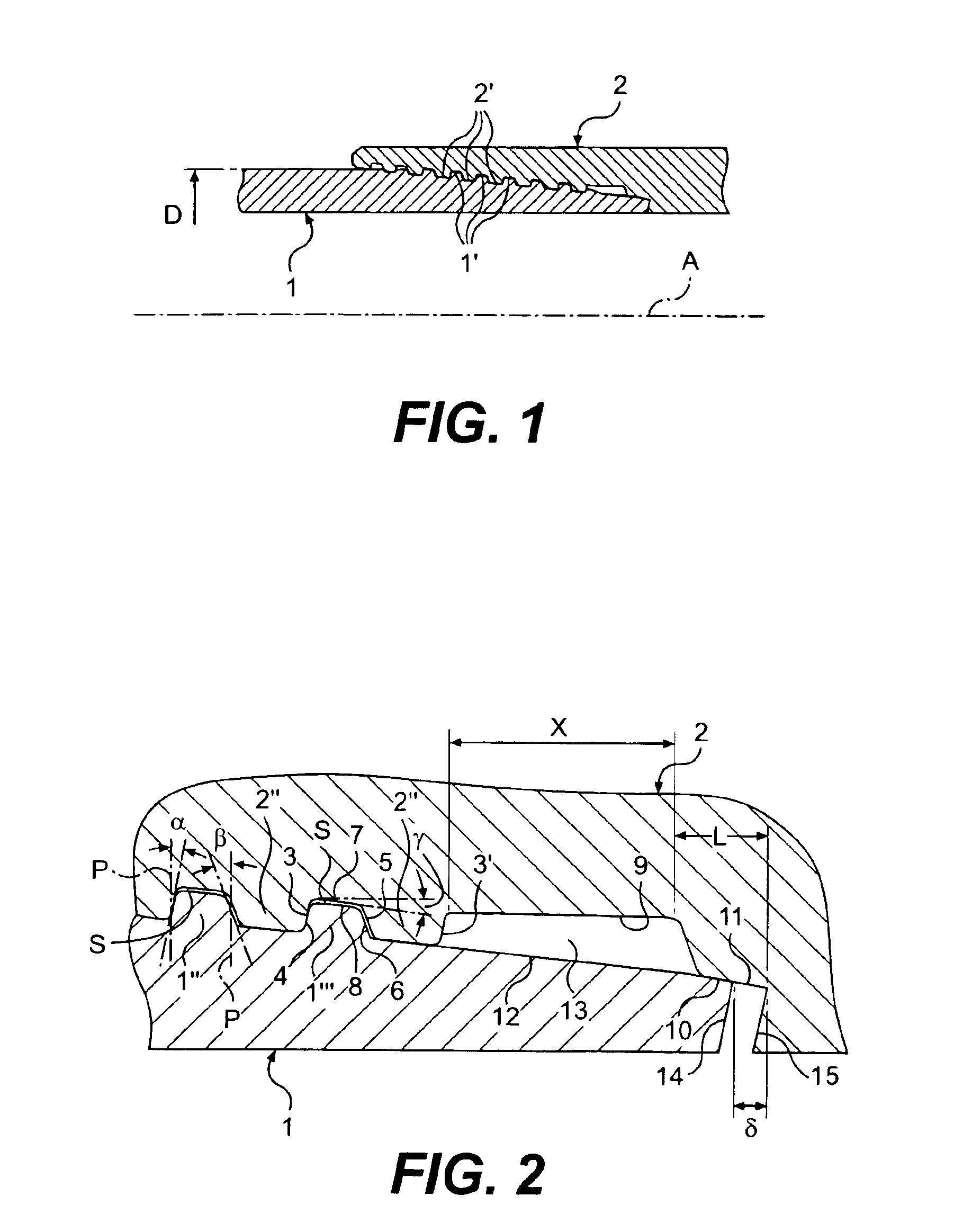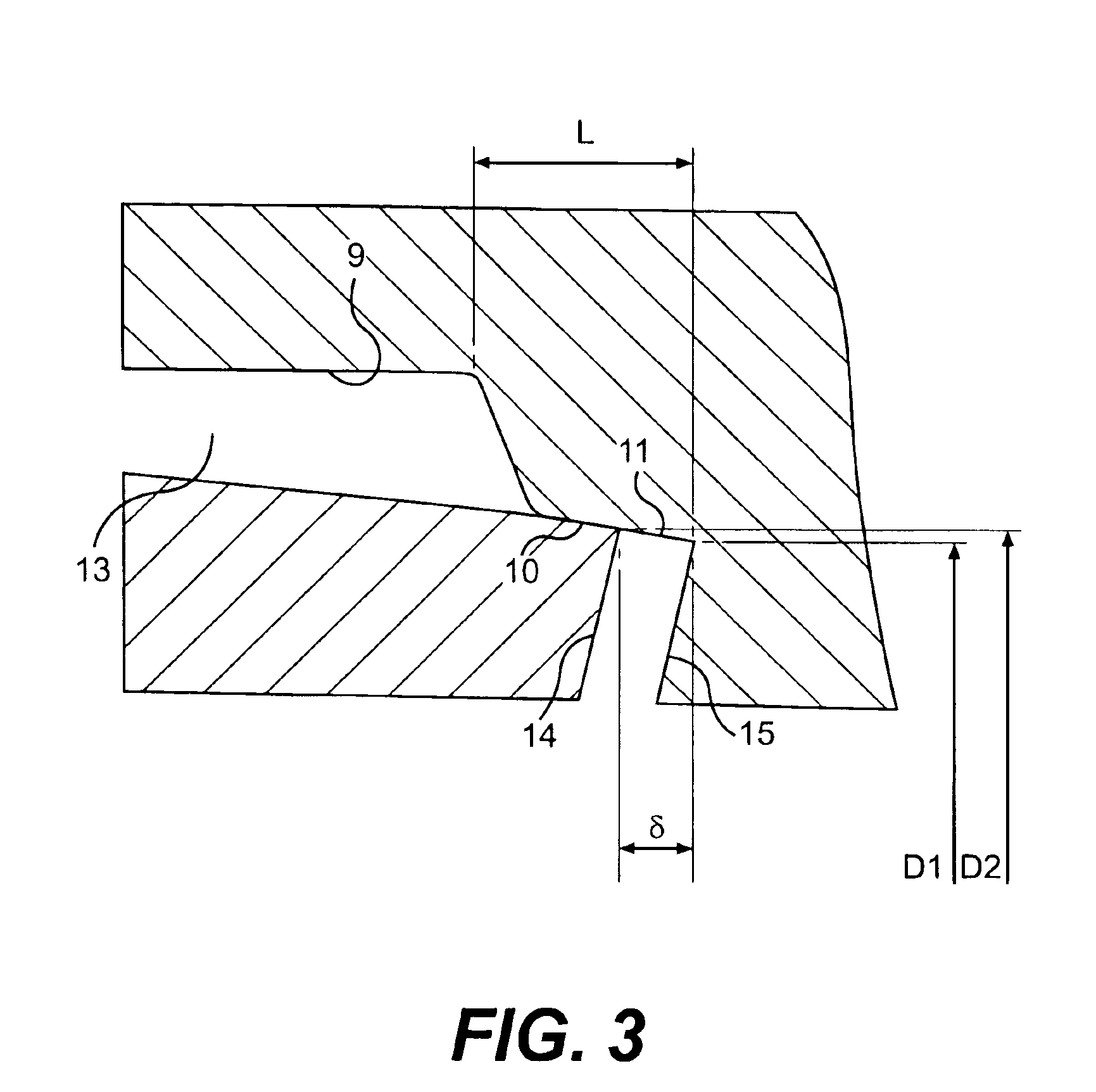Threaded pipe joint
a pipe joint and threaded technology, applied in the direction of threaded joints, pipes/joints/fittings, hose connections, etc., can solve the problems of high pressure peaks, deformation of the joint, and extremely dangerous joint use of lubricants, so as to reduce the pressure of the lubricant of the joint and excellent performance levels
- Summary
- Abstract
- Description
- Claims
- Application Information
AI Technical Summary
Benefits of technology
Problems solved by technology
Method used
Image
Examples
Embodiment Construction
[0026]With reference to the figures, a joint according to the present invention is now described as a non-limiting example.
[0027]The joint according to the present invention, used to join pipes with a nominal diameter D, comprises a male element carrying an external thread 1′, and a female element 2 bearing an internal thread 2′. The common axis of the pipe and the male and female elements is indicated with A.
[0028]All the teeth 1″,1′″ and 2″ of the threads 1′ and 2′ respectively have lead-in flanks, respectively 6 and 5, inclined towards the left, in the sense of FIG. 2, with respect to a perpendicular P to the axis A of an angle β between 10° and 25°, and load flanks, 4 and 3 respectively, inclined, in the sense of FIG. 2, with respect to a perpendicular P to the axis A of an angle α between −4° and 3°. The peaks 8 and the roots 7 of the teeth are inclined with regard to the axis A of the pipe of an angle γ of a value between 0° and 4°.
[0029]The inner part of the male element 1 co...
PUM
 Login to View More
Login to View More Abstract
Description
Claims
Application Information
 Login to View More
Login to View More - R&D
- Intellectual Property
- Life Sciences
- Materials
- Tech Scout
- Unparalleled Data Quality
- Higher Quality Content
- 60% Fewer Hallucinations
Browse by: Latest US Patents, China's latest patents, Technical Efficacy Thesaurus, Application Domain, Technology Topic, Popular Technical Reports.
© 2025 PatSnap. All rights reserved.Legal|Privacy policy|Modern Slavery Act Transparency Statement|Sitemap|About US| Contact US: help@patsnap.com



